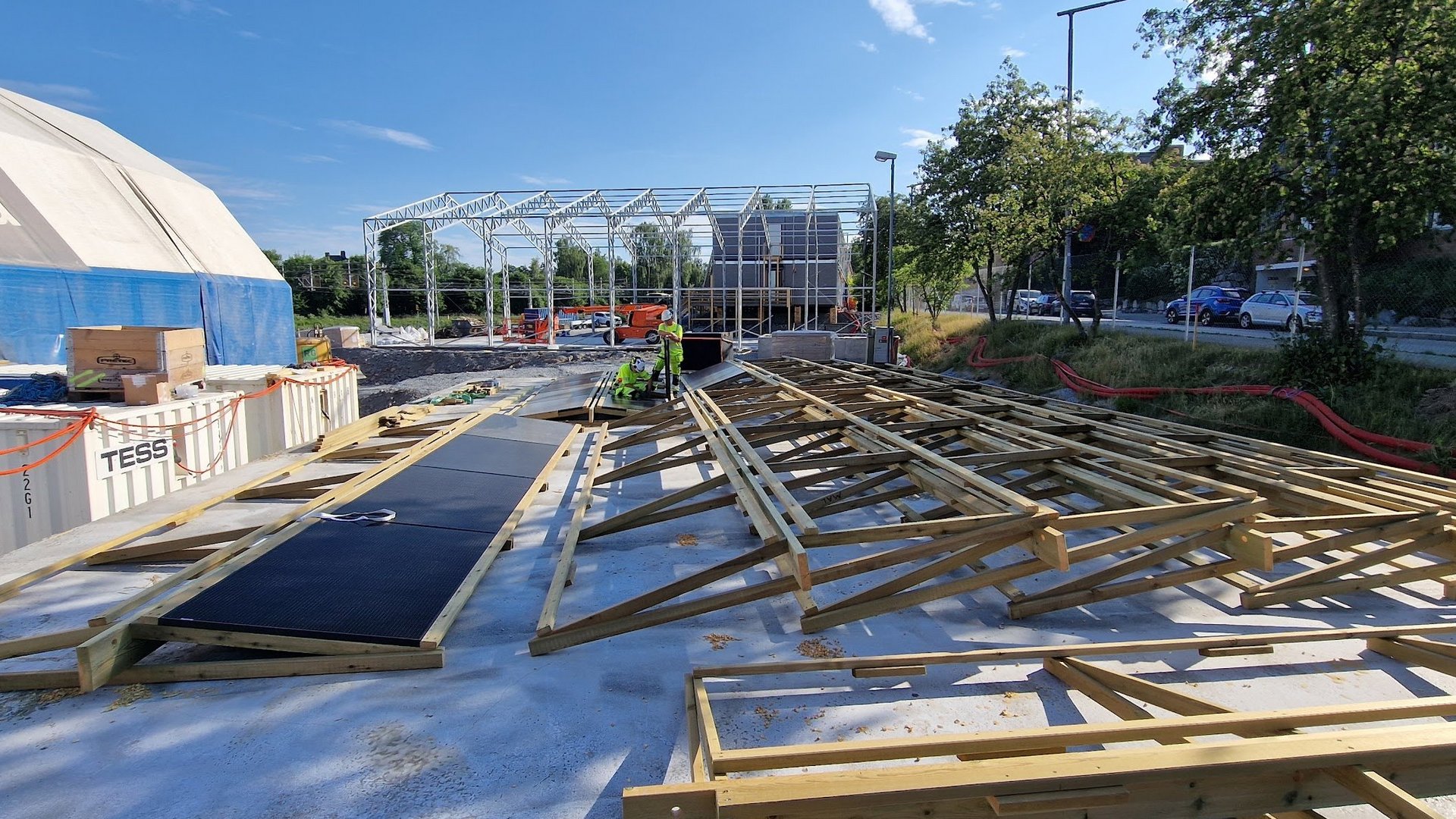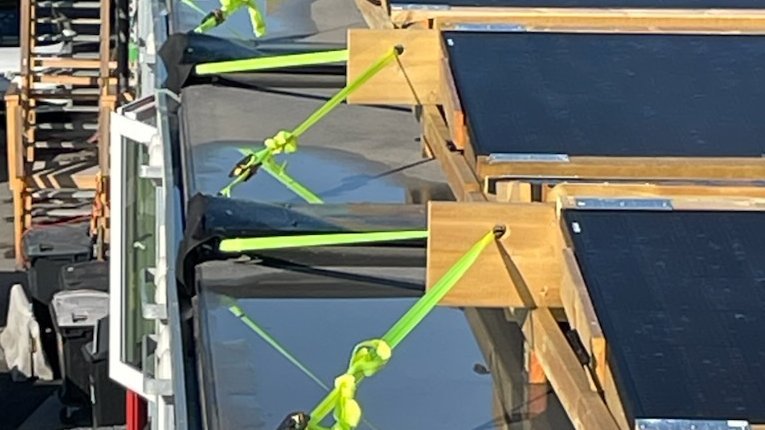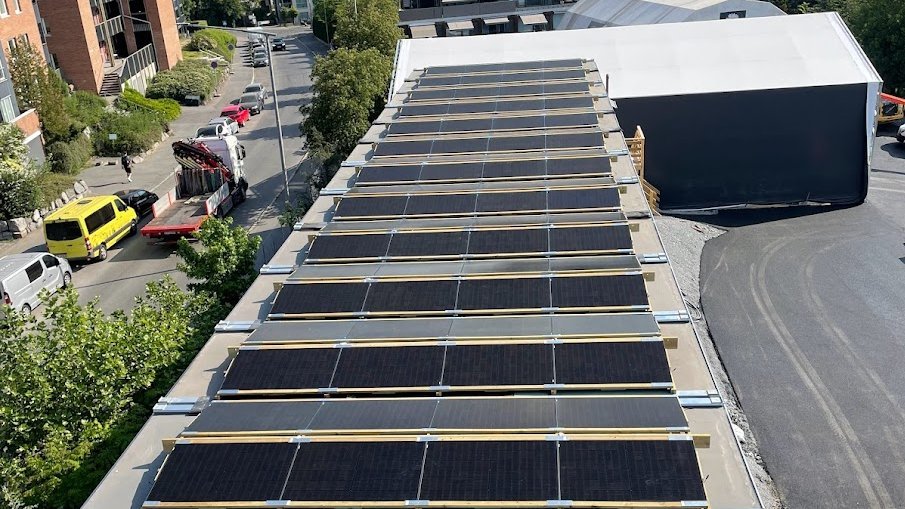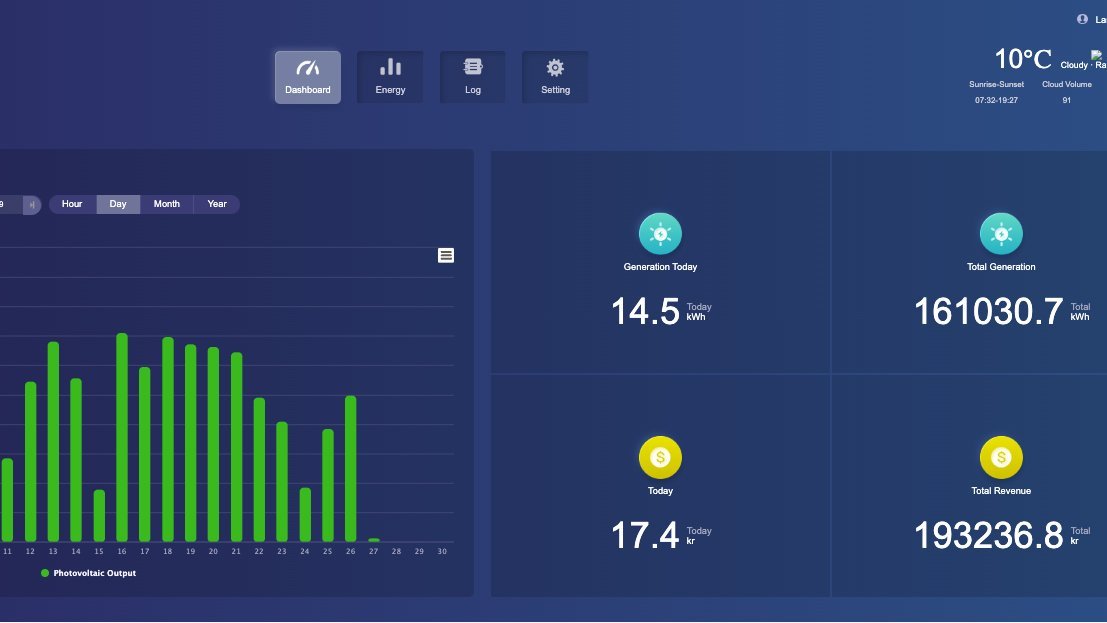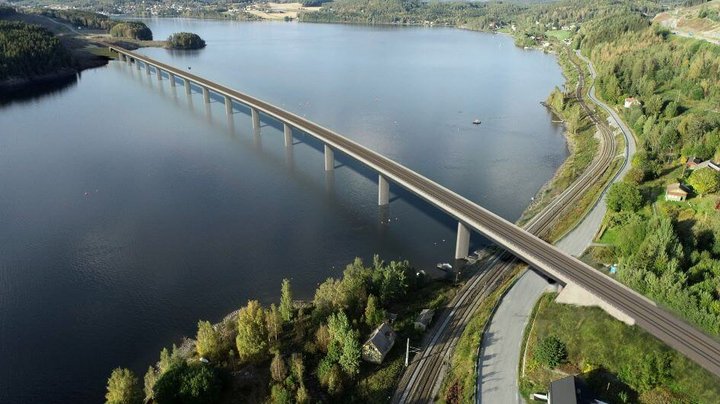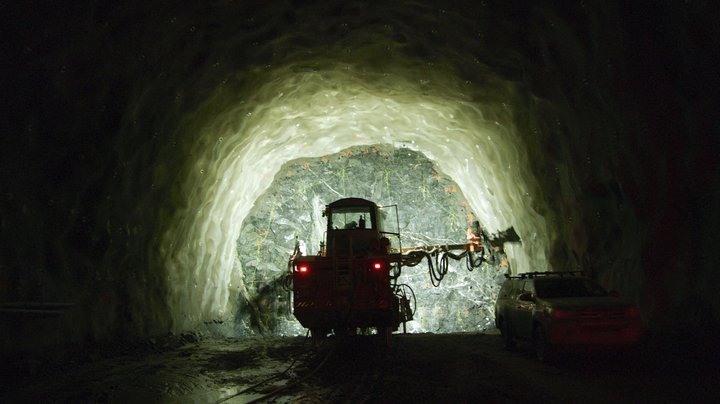Pioneering solar technology for construction sites

Implenia Norway powers construction sites with solar energy. The panels provide the barracks with all the power they need for daily operations, such as cooling, heating, showers and cooking. At the E03 Rogfast and Tangenvika projects, solar panels also provide electricity for electric vehicles.
Self-developed modular system for flexibility
Implenia Norway saw a possibility to increase the use of renewable energy on the projects by installing solar panels, however existing solutions on the market did not meet the projects’ need for flexibility. Through research and clever thinking, Head of electrical at Implenia Norway, Lars Rise, and his team came up with their own modular system.
With self-developed wooden fixtures, Lars and his team created a flexible and portable modular system which ensures that panels can easily be added or removed if projects are scaled up or down.

«By developing our own wooden fixtures, we have made a flexible modular system which can be applied to all our projects.»
Lars Rise
“By developing our own wooden fixtures, we have made a flexible modular system which can be applied to all our projects. Power cabinets are detached from barracks and can easily be removed. All this makes it easy and cost-efficient to adapt our use as the project evolves and reuse solar panels at other projects,” says Lars.
Lars explains that several solar panel providers made offers to Implenia Norway including large, complex and costly systems. These are, however, not optimal for dynamic constructions such as barracks.
“Most buildings fueled by solar panels have large, permanent fixtures, but our needs are different. By creating our own portable modular solar power system, we have the flexibility we need to be agile while also being environmentally and economically sound,” says Lars.
Full overview of energy use and production
Softwares Growatt and Fronius provide live information about energy generation, power source use per project and unit, CO2 emission reduction, and more. Between the installation of solar panels in 2023 and September 2024, the three Implenia projects using solar panels have reduced CO2 emission by 73,8 tons, reduced deforestation by 4000 trees and saved 29,6 tons of coal.
“Having both live and historical information about solar power generation easily at hand gives us a unique overview of energy use on our projects – both solar and fossil. This is also valuable documentation in tenders and sustainability reporting,” says Lars.
Norway’s climate is characterized by great variation both between seasons and geographical areas. Due to scarce sunlight country-wide in the winter months, solar power is only generated on the projects between March and October. On cloudy days with low solar power production, there is a seamless transition between solar power and other power sources. This data is also easily accessible in the software.
Always improving
Implenia’s solar panels has sparked the interest of both clients and the rest of the construction industry.
“This is pioneering technology in our industry, and our modular system has gotten other actors in construction intrigued. The flexibility our modular system offers is unique, and definitely something we will apply on all future projects,” says Lars.
As one project comes to an end, solar panels are disassembled and transported to other projects. Solar panels have a life span of 25 years. However, since Implenia’s panels are easily removed and solar energy technology is constantly improving, Implenia Norway’s panels are replaced after eight years. As solar panels are replaced or supplemented, the life span of the new solar panels will have increased significantly – making them even more cost-efficient.
“The positive effects of using solar panels are constantly increasing, and with improved solar panel technology, we can reduce our CO2 emissions even further – all the while saving costs. Our modular solar panels have become quite the success story,” Lars Rise concludes.
